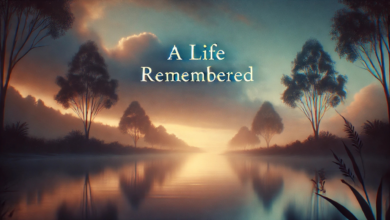The Role of Incestflox in Modern Storytelling

Introduction
Storytelling has always been a significant part of human culture and has evolved alongside societies and technologies. From ancient myths to modern digital platforms, how we tell stories has drastically changed. However, specific themes have remained, often causing fascination and controversy. One of these themes is incestflox, a term that has recently emerged in the landscape of modern storytelling, especially in certain online subcultures and niche genres.
While the term “incestflox” may not yet be widely recognized in mainstream media, its presence in various forms of media, including fan fiction, online stories, and even specific controversial works, has made it an important topic of discussion. In this article, we will explore the role of incest-flox in modern storytelling, its origins, ethical concerns, and how it influences contemporary narratives.
What is Incestflox?
Before delving into its role in storytelling, it’s essential first to understand what “incestflox” actually means. The term “incestflox” is a niche concept that refers to stories or content that involve incestuous relationships, often written or created in ways that blend fantasy, taboo, and sometimes absurdity. These narratives typically challenge societal taboos, exploring themes of forbidden relationships, sometimes in fantastical or exaggerated settings.
While it is still a relatively obscure term, it can be considered a dark or controversial storytelling subgenre. It draws on the shock value of the taboo subject matter, exploring a broad range of emotions and power dynamics. Incestflox is often associated with speculative fiction, including fan fiction and online narratives, where it can blur the lines between fantasy and reality.
Historical Context and Origins
To understand the role of incestflox in modern storytelling, we need to consider its historical roots. Incestuous relationships have appeared throughout literature and myth for centuries. Ancient Greek mythology, for example, is rife with stories of gods and mortals engaging in incestuous unions, such as the relationship between Oedipus and his mother, Jocasta. Such stories often explored themes of fate, power, and human nature.
Over the years, incest as a theme in literature has evolved. In the 20th and 21st centuries, taboo subjects have become more openly discussed, often to challenge societal norms or provide commentary on cultural constructs. However, in the modern era, with the rise of the internet and digital storytelling, these themes have found new life in unconventional spaces. Incestflox, as a more recent development, is part of this broader trend of exploring taboo subjects through storytelling, especially in online communities where freedom of expression and less restrictive content guidelines prevail.
Incestflox in Modern Storytelling
The rise of niche subcultures on the internet has provided a platform for stories that explore darker and more controversial subjects, including incestflox. This genre has gained some attention in online storytelling communities, particularly fan fiction, where the taboo themes of forbidden relationships are often explored. These stories can range from those that explore deeply psychological or emotional aspects of these relationships to those that turn the concept into an absurd or fantastical narrative.
In fan fiction, incestuous relationships are sometimes depicted between characters from popular media franchises. These characters, often from TV shows, movies, or video games, are reimagined in settings that allow for complex and morally ambiguous relationships to develop. In some cases, incestflox can be used as a means of exploring power dynamics, identity, or forbidden desires in a way that is not bound by traditional narrative structures or societal norms.
Ethical Considerations
While incest flox may have a place in certain forms of modern storytelling, it is not without its ethical concerns. The portrayal of incest, even in fictional or fantastical settings, raises significant questions about the boundaries of taste, morality, and societal impact.
- Psychological and Emotional Impact: One of the significant concerns with incestflox content is its potential impact on audiences, significantly younger or impressionable individuals. For some, these stories may normalize or romanticize harmful behaviors, leading to a desensitization of taboo subjects. Creators and consumers must recognize the potential harm in promoting or engaging with such material, especially if presented without clear context or caution.
- Consent and Power Dynamics: Incestuous relationships inherently involve complex power dynamics. These relationships often blur the lines of consent, as one or more parties in the story may not be able to fully consent due to age, manipulation, or other factors. While such relationships can be used to explore the darker aspects of human psychology, creators must handle the subject matter with sensitivity and care.
- The Role of Fantasy and Escapism: Many creators of incestflox content argue that it should be seen purely as fantasy or escapism, where readers or viewers can engage with taboo subjects in a controlled environment. However, there is still a risk that such content can cross boundaries and begin to influence real-life attitudes toward incest and power dynamics.
The Impact of Digital Media and Internet Culture
The internet has played a significant role in the development and spread of incest-flox stories. Online platforms, such as forums, social media, and fan fiction websites, have allowed individuals to explore their creativity without the constraints of traditional publishing. These spaces provide a forum for sharing niche and controversial stories among like-minded individuals, which can lead to normalizing such topics in certain circles.
However, the accessibility of this content raises questions about what should be considered acceptable in public spaces and what should be restricted. The internet has blurred the lines between private and public content, making it easier for people to encounter such material without seeking it out. This has led to debates on how platforms should regulate content and the responsibility of content creators when dealing with sensitive topics.
The Future of Incestflox in Storytelling
As society continues to grapple with the portrayal of taboo subjects in media, the future of incestflox in storytelling will likely remain controversial. Creators must balance freedom of expression with responsibility, ensuring that they are mindful of the potential impact on their audience.
The genre could evolve in response to societal shifts, either gaining more mainstream acceptance or falling out of favor as new taboos emerge. As long as niche storytelling communities continue to thrive, it’s likely that incest-flox will maintain a place in these subcultures. Still, its role in the broader media and entertainment world media and entertainment world remains uncertain.
Conclusion
Incestflox plays a unique and controversial role in modern storytelling. While it explores taboo themes and pushes boundaries, it raises significant ethical and moral questions. As the digital world continues to evolve and new narratives emerge, it will be essential to maintain a dialogue about the limits of creative freedom and the responsibility of content creators in handling sensitive subject matter. Whether seen as a form of escapism, social commentary, or an exploration of forbidden desires, incestflox will remain a topic that sparks intense debate and reflection on the role of storytelling in contemporary culture.
Frequently Asked Questions (FAQs)
- What is incestflox in modern storytelling?
- Incestflox refers to stories that explore incestuous relationships, often in a fantasy or taboo context. It is commonly found in fan fiction and online storytelling communities, where it is used to analyze complex emotions, power dynamics, and forbidden desires.
- How does incestflox differ from other taboo genres?
- Incestflox specifically focuses on incestuous relationships, while other taboo genres may explore topics like violence, dark psychology, or social taboos unrelated to familial relationships. Incestflox is a unique intersection of taboo subject matter with fantasy, and speculative fiction distinguishes it.
- Why is incestflox considered controversial?
- Incestflox is controversial due to its exploration of incest, a subject that raises moral, ethical, and psychological concerns. The portrayal of such relationships, even in fictional settings, can be seen as normalizing harmful behaviors and challenging societal taboos.
- What are the ethical concerns surrounding incestflox content?
- Ethical concerns include the potential normalization of harmful behaviors, the portrayal of non-consensual power dynamics, and the emotional and psychological impact on audiences, particularly young or impressionable individuals.
- Is incestflox content harmful?
- The harm caused by incestflox content depends on various factors, such as the context in which it is presented and the audience consuming it. While some argue it is a harmless fantasy, others believe it can desensitize individuals to taboo behaviors and affect societal attitudes towards incest and power dynamics.
You May Also Read: https://techzeper.com/andrew-santino-wife/





